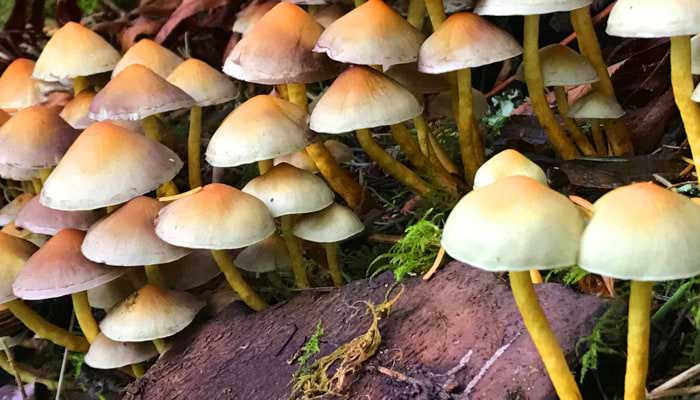
© Erika Kirkpatrick / Shutterstock.com
Fungi are everywhere in the world and there are so many different types that we don't know exactly how many exist. A conservative estimate suggests there are up to 5.1 million species! They have many purposes - some good and some bad. They are all around us: in the air, in the soil and even in our bodies. Often too small to be seen, they are sometimes used to make vital medicines and provide food. However, they can also cause plant and animal diseases, thus wreaking havoc in nature. Whatever their purpose, the fungal kingdom as a whole is vital to life on earth - yet scientists believe we still have no knowledge of 90% of the world's species, making them a constant source of fascination. What is fungi? Fungi is a group of organisms (including micro-organisms) such as moulds, yeasts and the more familiar mushrooms. Ranging from single cell to very complex multi-cellular organisms; they are subdivided, based on their life cycle, the structure of their body and the type and arrangement of the spores they produce. The major groups of fungi include multi-cellular filamentous mould that forms large bodies. We refer to these as mushrooms, but the mushroom is merely the part of the fungus that protrudes above ground, known as the fruiting body. Another major group is made up of single-celled microscopic yeasts. This includes the type of yeast-like fungus that commonly occurs on our skin, causing various skin conditions and discomfort. The spores are like seeds, as they help the fungus to reproduce. Spores are spread by wind, rain and insects, landing in new habitats. When the conditions are right, the spores start to grow. Fungi don't move, so the spores ensure they can find new environments, where there are fewer competing organisms, in order to expand. Good and bad fungi There are numerous examples of good fungi, such as the type that produces edible mushrooms that we can safely eat. However, some mushrooms are poisonous, which is why you should never pick and eat wild mushrooms when on a camping holiday, for example, as they could be lethal. Good mould is behind penicillin, which saves lives. The discovery at St Mary's Hospital, in London, in 1928, by Alexander Fleming, led to the invention of drugs that significantly reduced the number of deaths from infections. The Professor of Bacteriology discovered that mould growing in one of his Petri dishes containing Staphylococcus bacteria had inhibited the bacterial growth. He realised the mould was capable of killing a large number of harmful bacteria such as meningococcus, streptococcus and diphtheria bacillus. His research led to the invention of penicillin to fight illness and disease. Other types of mould can have a negative impact on our health. For example, if your home is damp and mould is growing inside, it can cause respiratory problems and allergies and make asthma worse. Fungi in the eco-system Other fungi help plants to draw nutrients and water from the soil, while some can be used to make medicines that enable organ transplants, or lower blood cholesterol. Research is ongoing into good fungi that can help the ecosystem by breaking down harmful plastics or generating new kinds of biofuel. However, even in nature, fungi can have a darker side, as they can devastate crops, trees and other plants. There are many different types of fungi to be found outdoors, in our gardens and woodlands. If you're out walking and you spot any type of fungi or growth that you don't recognise, it's always best to avoid it, as you have no way of telling if it's harmful or not. Recycling nutrients The useful fungi that recycle nutrients are known as saprophytes. They can break organic matter down, creating rich soil where plants will thrive. The process is further helped by insects and bacteria, but saprophyte fungi are responsible for the majority of the nutrient cycling that helps life on earth. Fungi known as mycorrhizae is also good for plant growth. Creating a network; it produces long, thin filaments that connect roots in the soil, while providing water and nutrients to the roots. Plants with mycorrhizae fungi tend to thrive more than those without fungi. Many species of fungi are edible, providing food for animals. For example, caribou eat lichen in winter when other food is scarce. They couldn't survive without it. In nature, good fungi aid the survival of species by supplying nutrients, while their role as recyclers and decomposers exists in many different habitats. Fungi release biologically essential elements, such as phosphorus and nitrogen, from decaying matter: the food chain would be incomplete without these organisms to decompose organic matter, as large quantities of elements such as phosphorus and nitrogen are required by biological systems, but they are not abundant in the environment. As fungi is such a massive field of research, we may never fully understand the millions of different species and their purpose on the planet. In order to fully appreciate their value, we need to consider that without them, life on earth as we know it today may not exist.




